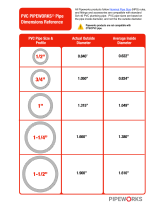
English (GB)
6
3. Installing the product
3.1 General guidelines
Guidelines for correct mechanical installation of
lifting station are according to EN 12056-4.
• If the lifting station is installed in a basement with
regular penetrating groundwater, we recommend
to install a drainage pump in a separate pump
sump below floor level (mandatory in certain
countries). If there is only a risk of penetrating
groundwater, we recommend to install a float
switch outside the lifting station and to connect it
a controller, which will indicate an high level
alarm in case of flooding.
• The collecting tank must be fixed to the floor.
• We recommend that you connect a diaphragm
pump to the collecting tank in order to be able to
empty the tank manually.
• All outlet pipes from the lifting station, diaphragm
pump and drainage pump must have a backwater
loop, i.e. a bend above the local backwater level.
Commonly, the highest point of the bend must be
above street level. See fig. 2.
• Surface water must not be discharged into the
lifting station inside the building. It must be
collected and discharged outside the building.
• A non-return valve must be installed at the
discharge of the lifting station to prevent back
flow from the sewer for example.
• Install isolating valves at the inlet and outlet of
the lifting station.
• The volume of the outlet pipe above the non-
return valve up to the backwater loop (bend in the
pipe) must be smaller than the effective tank
volume.
• In general, a lifting station for black wastewater
must be vented above roof level. However, it is
permitted to lead the ventilation into the main
building ventilation system. Special two-way
venting valves must be placed outside the
building.
• If the wastewater is discharged into a collecting
line, the collecting line must have a filling ratio of
at least h/d = 0.7. The collecting line must be at
least one nominal diameter bigger after the outlet
pipe connection.
• 45 degrees bends must be used to avoid
sedimentation in pipework.
3.2 Choice of tank inlets
It is optimal to lead your pipework to the top inlets of
the tank, as it will prevent backflow and
sedimentation in the inlet pipe and give you the
possibility to use a high start level for the pump. A
high start level increases the effective tank volume
and decreases the numbers of start/stop of the
pumps.
If you use the bottom inlet, you have to select the
lowest start level. If the start level is above the inlet
height, there will be backflow in the inlet pipe. thus
increasing the risk of sedimentation in the pipework.
3.3 Location
The lifting station must be installed in a properly lit
and vented room with 60 cm free space around all
parts to be serviced and operated.
The tank must not be exposed to direct sunlight. UV
can affect the properties of its composite material,
resulting in a shorter life.
The product is designed for indoor operation. If
installed outside, it must be placed in a closed pit.
The tank can be flooded and may be installed in a
basement with risk of penetrating groundwater.























